Microreview: Dialectic Diatribes on the New European Bauhaus
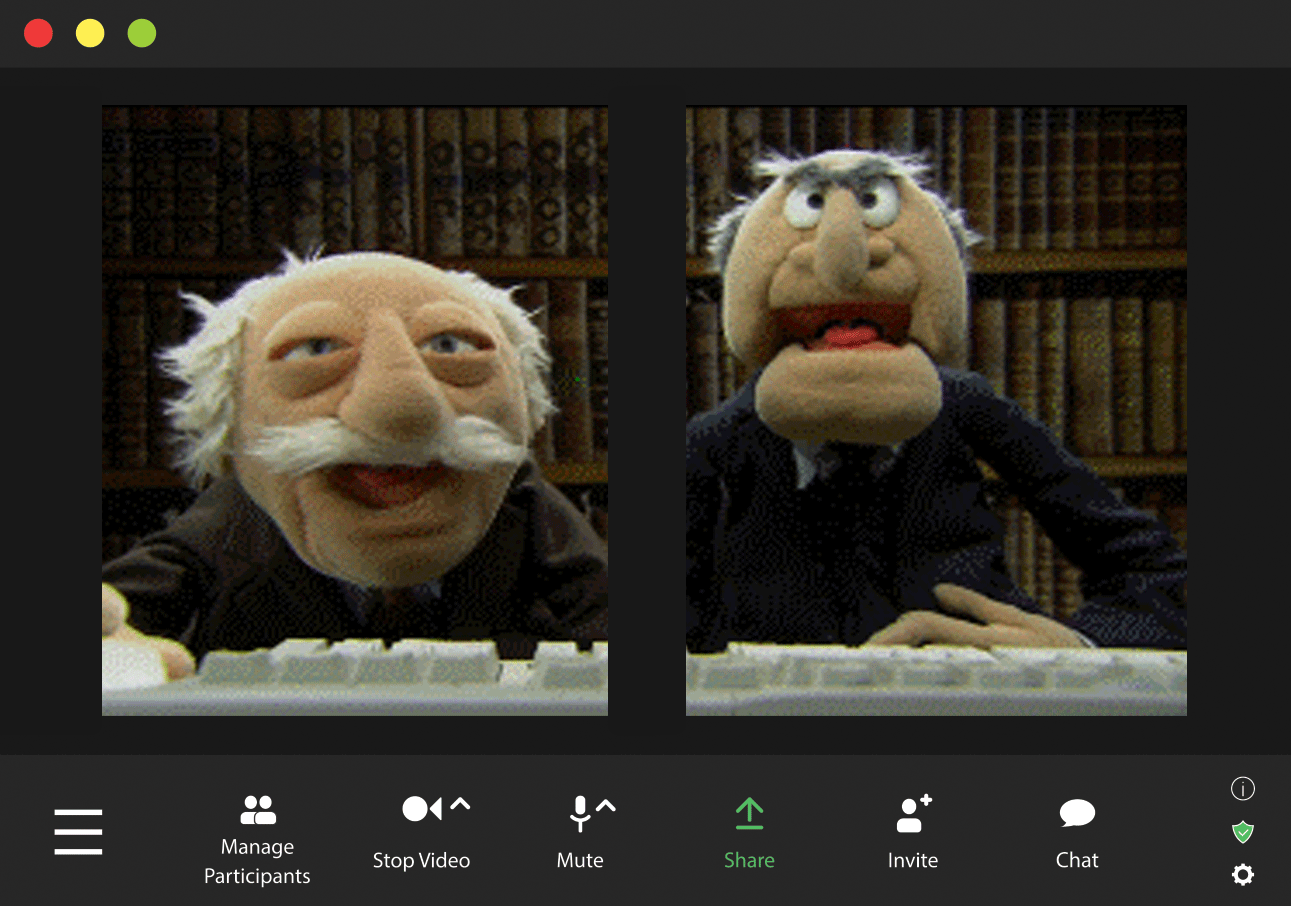
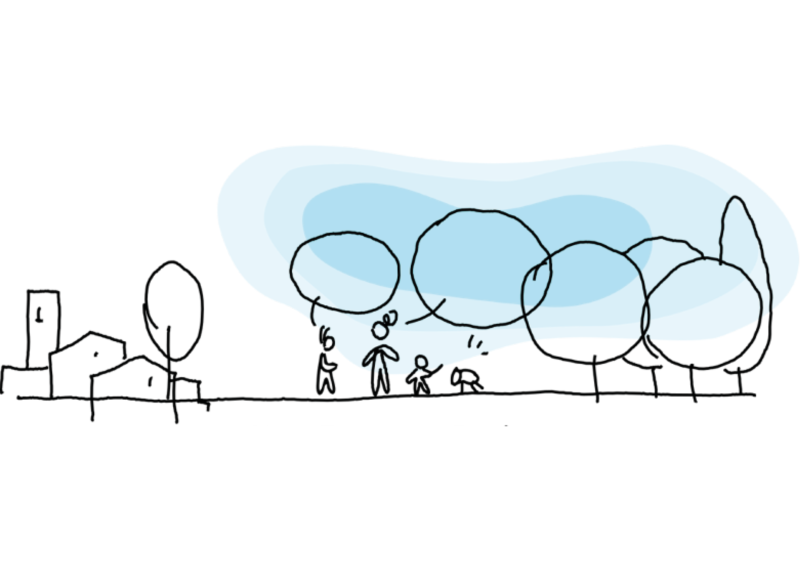
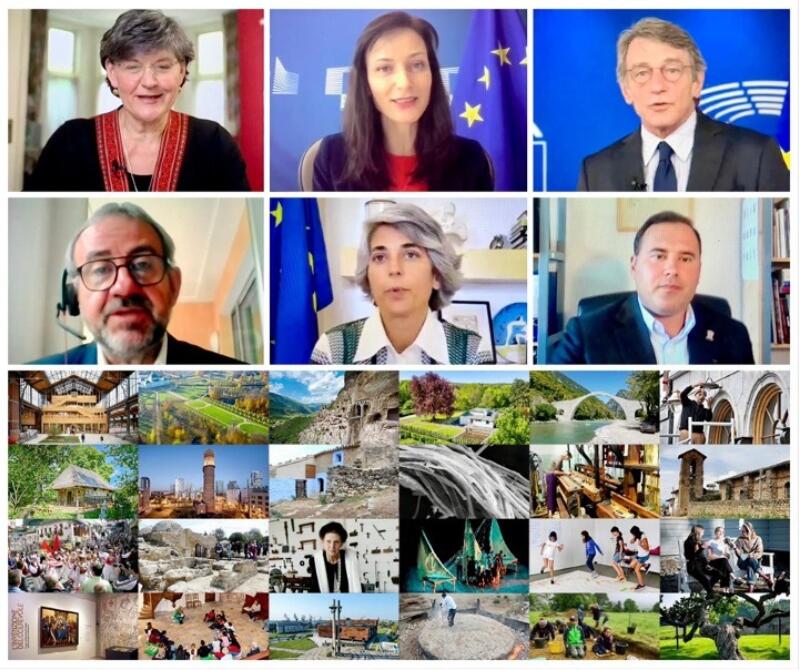
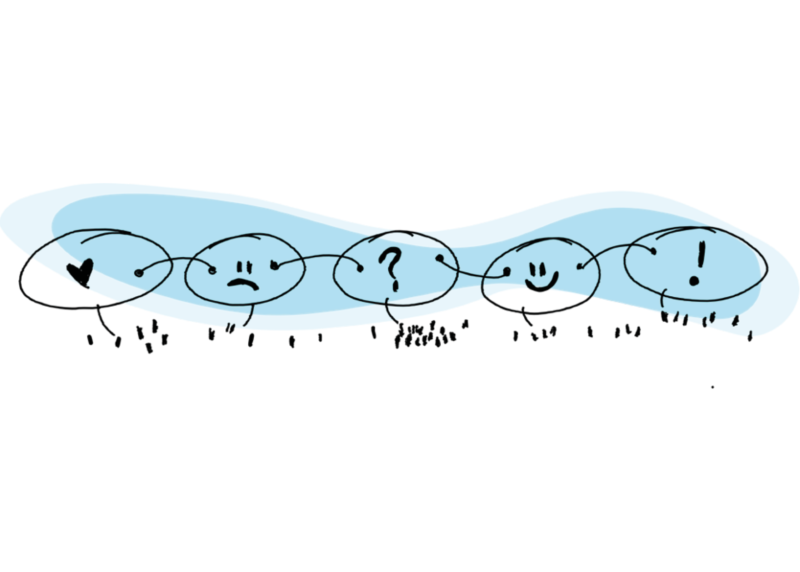
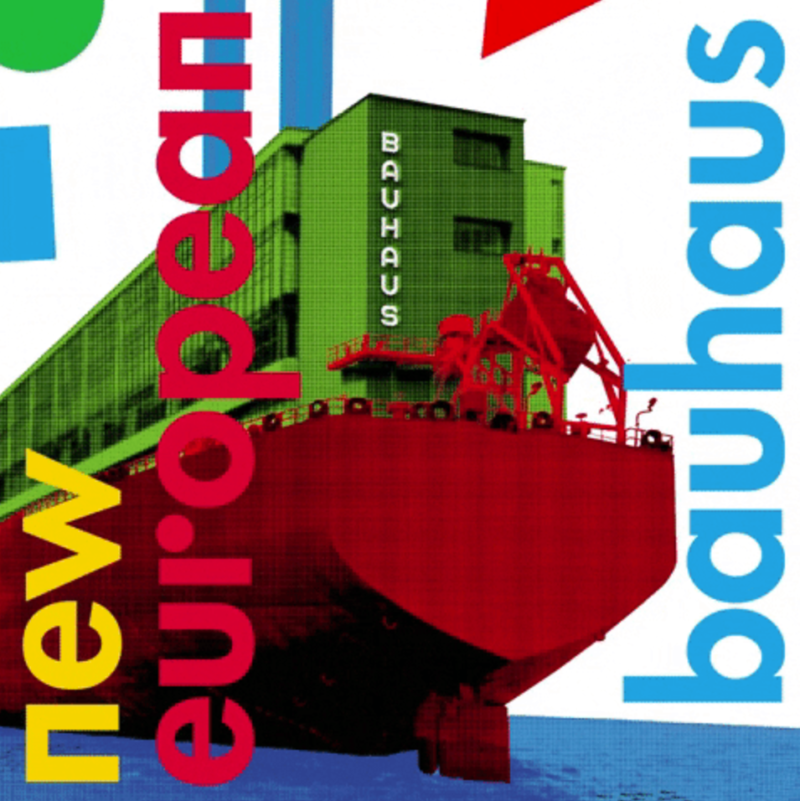
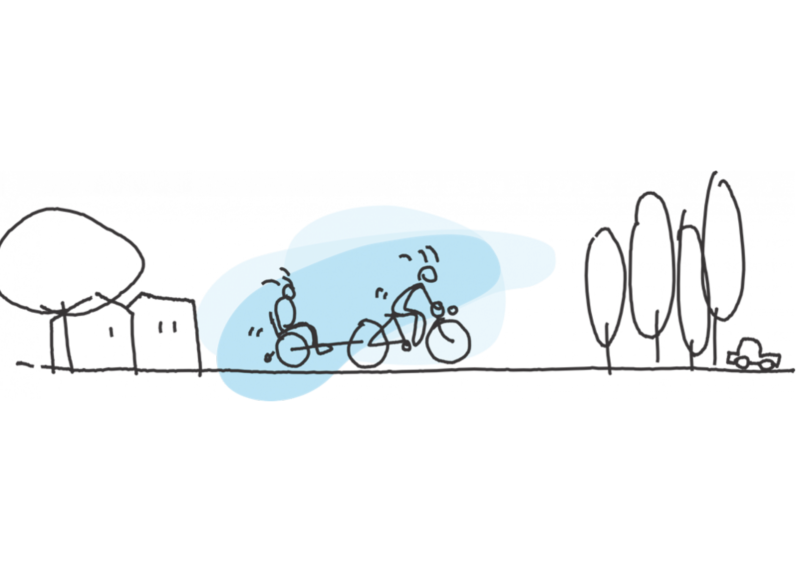
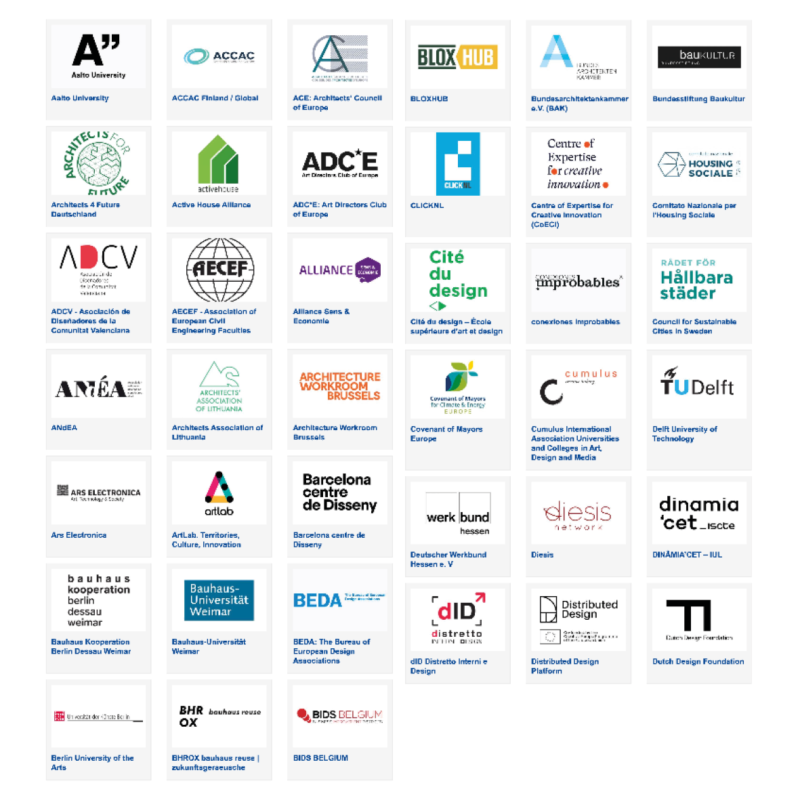
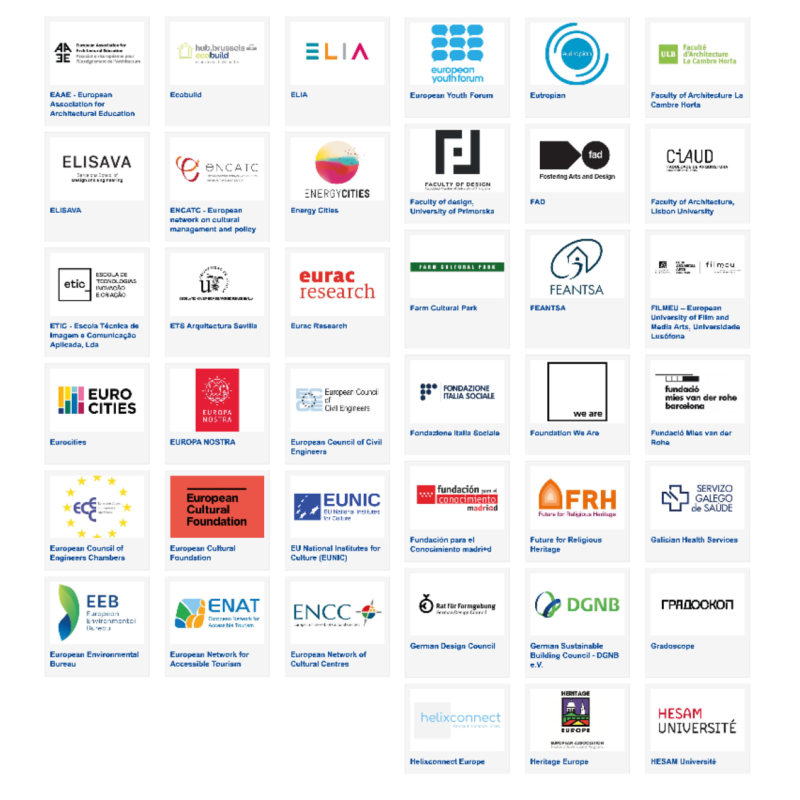
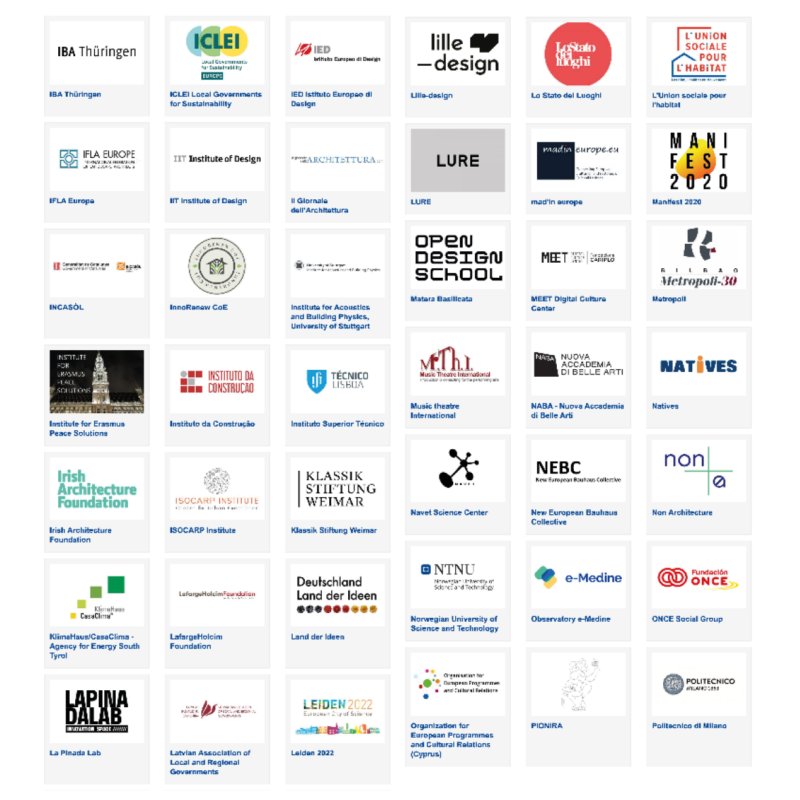
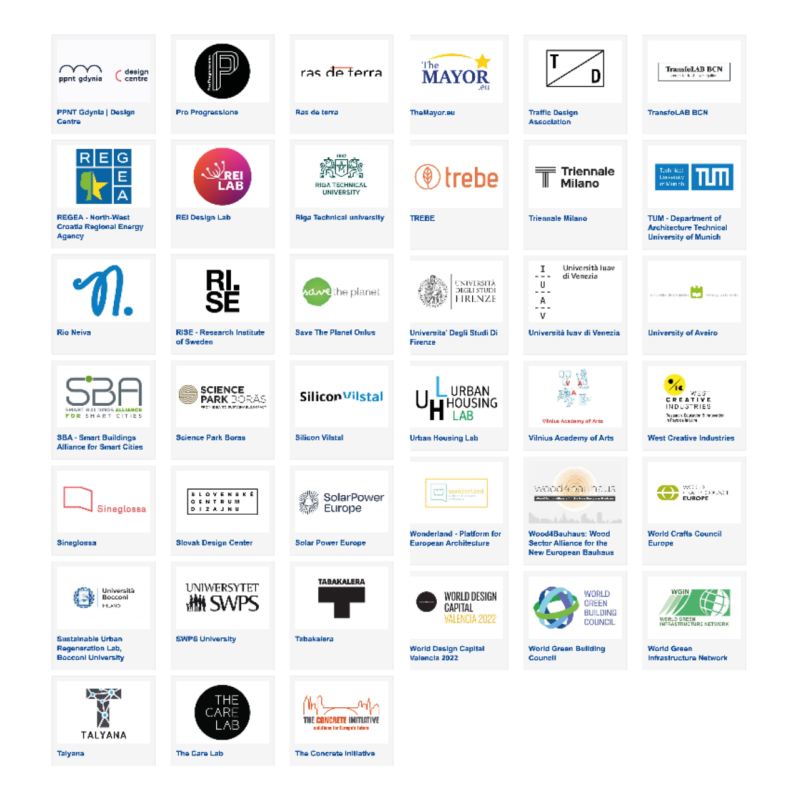
- Date
- 2021 June
- Subtitle
- (Statler & Waldorf for) Anke Gruendel and Jamie Allen review the New European Bauhaus project in 3 parts
- Type
- microreview
- Author / Publisher
- Anke Gruendel and Jamie Allen for NewsLibrary
- Author Info
Anke Gruendel holds a PhD in Politics from the New School for Social Research and currently is a research associate at the Humboldt University in Berlin. Her current research investigates new forms of political rationality in public sector design that inform how theories of democracy and the political continue to be enacted and transformed in modern technical democracies.
Jamie Allen is occupied with the ways that technologies teach us about who we are as individuals, cultures and societies. His work has been exhibited internationally, from the Neue Nationalgalerie in Berlin to the American Museum of Natural History in New York to the Nam June Paik Art Center in Korea. He teaches, lectures and leads workshops widely, engaging with and working to create collaborative contexts that acknowledge how care, attachment and love are central to knowledge practices like art and research. http://jamieallen.com/
- Language
English
- Also published here
Newsletter No. 35
- Reviewed Publication
Intro
Launched on 14 October 2020, the New European Bauhaus (NEB) Initiative is a project initiated by the European Commission with the express purpose of using design for politics, politics for design, or both. Bound up in it are numerous histories, ambitions, and conceptions of what it means to make policy, practice art and design, or use media for political purposes in a fraught European landscape today
Ursula von der Leyen surprised many—artists and designers perhaps foremost—by announcing that the NEB would enlist designers on a continental scale, in response to the climate crisis facing Europe and the world
Two illustrious European commentators and cultural stewards, Statler
(S) and Waldorf (W), over a Zoom call between their apartments in Paris
and Vienna, respectively, engaged in a three part high-level roundtable
on the resonances and implications of this momentous, ambitious, and
somewhat cryptic creative, political project, shortly after its launch.
This is what transpired:[1]
[1] Anke Gruendel and Jamie Allen’s review of the New European Bauhaus project is voiced through Statler and Waldorf, two elderly hecklers based on the homonymous Muppet characters. Through these characters, important critiques of the project are voiced in a way that takes up the New EU Bauhaus project as welcoming of “everyone’s” opinion, in the classical form of a Socratic dialogue. Their discussion is inspired by art critic Jan Verwoerts’ suggestion of The Muppet Show
as an ideal for diverse communities that provoke a strange assembly of
creatures finding a way to coexist that is impossible to explain (Butt, 2007, Artistic research in the future academy).
Part I: I Don’t Understand What ‘It’ Is?
W: Waldorf, have you heard about this New European Bauhaus?
S: Heard about it? Seen it, can’t avoid it. They’re all over Instagram (@neweuropeanbauhaus) and Twitter (#NewEuropeanBauhaus). And their website keeps inviting me to ‘Share my views’.
W: What happens when you click it?
S: They want me to co-designing the New European Bauhaus with them.
W: Does it also tell you what you are co-designing?
S: Maybe there is something in the fine print. Hang on a moment while I get my glasses… Ah, yes. Looks to me like the typical design trick for inspiring active participation from the hoi polloi. Allowing you to see yourself in the project, in an unthreatening way.
W: Can you see yourself in this: https://www.instagram.com/p/CPQ8iYClPce/?
S: No, can you?
W: No, but maybe they’re trying to “appeal to the youth.” So definitely not you! Looks like they want to create a new Europe, setting out a new deal, a “European Green Deal.” Cultures of sustainability for a green future and all that. I guess the climate crisis is their problem, not ours.
S: It’s art and design as politics, or art and politics as design. I can’t quite tell which or if they're doing either one very well.
W: I still don’t understand what ‘it’ is. Maybe that’s the point... It’s to be “co-designed”!
S: “Co” as in ‘corporate’, or “co” as in cost-effective?
W: [maniacal laughter] Waaaahahahahahah!
S: [maniacal laughter] AAhhhh Hahahah Ha!
-
Part 2: Imposing Normative Beauty?
W: The main website features a simplistic childish aesthetic. You would think for an initiative like this, they would’ve hired slick designers who can actually, you know, design.
S: So where is the aesthetic coming from, then?
W: It might make sense to think about what the old European Bauhaus was. What does Wikipedia say?
S: So apparently the original Bauhaus was a “German art school operational from 1919 to 1933 that combined crafts and the fine arts. The school became famous for its approach to design, which attempted to unify the principles of mass production with individual artistic vision and strove to combine aesthetics with everyday function.” So German aesthetic and technical expertise to the rescue... haven't they tried that before?
W: Maybe the New European Bauhaus folks should have read Wikipedia first…
S: I thought ze Germans were no longer in the business of trying to impose strict forms of industrial modernism and vague normative values like “beauty” on the rest of the world.
W: Maybe they should have imposed some of that normative beauty when they designed their website
W: (maniacal laughter) Waaaahahahahahah!
S: (maniacal laughter) AAhhhh Hahahah Ha!
-
Part 3: A ‘Grassroots’ European Union?
W: The New European Bauhaus is not just participatory. Looks like
there are specific, invited partners, experts and people already
involved.
S: That’s about as inclusive as the EU’s ever going to get. And anyway, don’t we still need experts for complicated problems like climate change? We can’t just rely on regular schmucks like you and me designing the New European Bauhaus, let alone the New Europe.
W: I definitely don’t want you designing Europe!
S: Perhaps a bit of context for the tradition of participatory design in Europe. Participatory design began in Scandinavian labor planning in the scope of what they called ‘workplace democracy.’[1] While there weren’t any significant social or cultural differences among the mostly white male workers, these designers and planners did have to deal with a complicated set of goals among labor unions that diverged sharply from the goals of business executives.[2] And keep in mind that casting ‘regular people’ as experts of their own lives also significantly transforms the idea of expertise.[3] This tradition is certainly in the background of the NEB’s idea of ‘grassroots’ design.
W: Are you lecturing me, professor? Why don’t you tell me how something as technocratic as the European Commission can do anything ‘grassroots’?
S: Patience, Waldorf. That’s what we’re all about to find out. Think outside the box!
W: We’re not in a box.
S: Certainly looks that way to me...
W: It is a Zoom call!
W: (maniacal laughter) Waaaahahahahahah!
S: (maniacal laughter) AAhhhh Hahahah Ha
[1] Gregory, J. (2003). Scandinavian approaches to participatory design. International Journal of Engineering Education, 19(1), 62-74.
[2] Sandberg, Å. Computer Dividing Man and Work. Malmö: Arbetslivscentrum, 1979.
[3] Sanders, E. B. N., & Stappers, P. J. (2008). Co-creation and the new landscapes of design. Co-design, 4(1), 5-18.
Publications
-
2026 January
Microreview: Radical Radio
Sam Richards reviews Lucinda Guy: Skylark.fm, 105.8 or 107.6 FM Dartmoor, Devon, England, since 2020.
microreviewSam Richards for NewsLibrary -
2025 November
Microreview: A Kind Reminder
Moosje M. Goosen reviews Staci Bu Shea: Dying Livingly, Sternberg / Solution Series 305, January 2025.
microreviewMoosje M. Goosen for NewsLibrary -
2025 October
Microreview: Archival Textures
Setareh Noorani reviews the publication series Archival Textures, founded in 2023 in Arnhem, the Netherlands, by Tabea Nixdorff.
microreviewSetareh Noorani for NewsLibrary -
2024 October
Microreview: Crear un común habitar
Daniel Godínez Nivón reviews Andrés González Berríos: Creating a common habitation: Reflections, exercises and texts for ecopoetic workshops. The Eternal Return Home: Mexico City, 2019 (Spanish)
microreviewDaniel Godínez Nivón for NewsLibrary -
2024 September
Microreview: A Colourful Flock in Expansion
Gabriel Gee reviews the library at La Dépendance artist residency in the Swiss Jura outside of St-Imier. Initiated and run by the artist Jan Van Oordt since 2018.
microreviewGabriel N. Gee for NewsLibrary -
2024 August
Microreview: Nourishing the Unborn
E. Onur Ceritoglu reviews Kadija de Paula: Milk it: pasteurized human milk made to nourish the future of those who have not yet digested the insult of being born. Silkscreen on glass bottles, instruction sheet, 2022.
microreviewE. Onur Ceritoglu for NewsLibrary -
2024 May
Microreview: TraumaZone: How to Approach an Archive
Julia Heurling reviews Adam Curtis: Russia 1985-1999: TraumaZone - What It Felt Like to Live Through The Collapse of Communism and Democracy. 7 Videos (ca. 1 hr each).
microreviewJulia Heurling for NewsLibrary -
2024 April
Microreview: The Poetic Power of Social Labour
Mahroo Movahedi reviews Liza Lou, Breathing Lesson, Acrylic on rigid mounting canvas, nails, beaded cloths. 2023.
microreviewMahroo Movahedi for NewsLibrary -
2024 March
Microreview: I don't like the rules, I like this game.
Francisco González Castro reviews Alys Longley: Smudge Skittle: A little inventory of resources entangling creative practice research and writing. University of Auckland, 2018.
microreviewFrancisco González Castro for NewsLibrary -
2024 January
Microreview: Public Secrets – Knowledge under Censorship
Simone Etter reviews Zoran Naskovski – Public Secrets, retrospective at the Museum of Contemporary Art Belgrad, Serbia (19.10.23 – 26.02.24)
microreviewSimone Etter for NewsLibrary -
2023 November
Microreview: The Big Overview – An Analogue Hinge for Digital Content
Siri Peyer reviews Inventory and Hinge. Entangled Fields of Research in the Arts. Institute for Contemporary Art Research 2001–2022, Christoph Schenker (Ed.), Diaphanes 2022.
microreviewSiri Peyer for NewsLibrary -
2023 September
Microreview: Of celluloid, plants, and archival monsters – Leandro Listorti's HERBARIA
Andrea Bordoli reviews Leandro Listorti, Herbaria, Argentina/Germany, 2022, 83 min, Spanish/German
microreviewAndrea Bordoli for NewsLibrary -
2023 July
Microreview: Dream Portal, Time Machine
Yin Yin Wong reviews Jay Tan, 'Under the Table' and 'Cave', mixed media installation, Dolf Henkes Prize exhibition, TENT Rotterdam, 05.06.2021 – 22.08.2021
microreviewYin Yin Wong for NewsLibrary -
2023 June
Microreview: To Make the Road by Walking
Daniel Frota de Abreu reviews Vijai Maia Patchineelam, The artist job description, for the employment of the artist as an artist, inside the art institution, published by Track Report (Antwerp), in collaboration with OAZA (Zagreb) and a.pass (Brussels), 2022.
microreviewDaniel Frota de Abreu for NewsLibrary -
2023 May
Microreview: The Paralyzing Present of Collapse
Lamia Abukhadra reviews Walid Sadek, Paintings 2020 – 2022, Beirut, September 2022.
microreviewLamia Abukhadra for NewsLibrary -
2023 March
Microreview: Love as an aesthetic-collective practice
Fatma Kargin reviews Love? Eine Werkstatt, 02.12. – 10.04.2023. Rautenstrauch-Joest-Museum, Ethnological Museum of Cologne.
microreviewFatma Kargin for NewsLibrary -
2023 February
Microreview: Memory and Stasis in Abkhazia
Asida Butba reviews Sam Jury & Anton Ochirov, This You Must Remember, mixed media exhibition, DEPO Istanbul, 8 November 2022–9 January 2023.
microreviewAsida Butba for NewsLibrary -
2022 December
Microreview: Staging Archives and Revealing Legacies
Julie Marmet reviews Camille Kaiser, Photographs by the sea, 1962 (Swiss Art Awards 2022, Basel) and Off-camera (Kunsthalle St.-Gallen 27.08-06.11.2022).
microreviewJulie Marmet for NewsLibrary -
2022 October
Microreview: Segopotso sa Gomora: A Form(less) Archive
Nyakallo Maleke reviews Refiloe Namise, Segopotso sa Gomora, mixed media installation and performance, The Point of Order & Johannesburg, 31 March–17 April 2022.
microreviewNyakallo Maleke for NewsLibrary -
2022 September
Microreview: Rigorous witnesses – rereading Herta Müller’s The Hunger Angel through the lens of poetic transcription
Regina Dürig reviews Herta Müller, The Hunger Angel (orig.: Atemschaukel), Berlin: Hanser, 2009.
microreviewRegina Dürig for NewsLibrary -
2022 August
Microreview: Artiste? Et sinon tu fais quoi?
Nihan Somay reviews Artiste? Et sinon tu fais quoi? (2016-ongoing), a project initiated by Louise Mestrallet and Cristián Valenzuela.
microreviewNihan Somay for NewsLibrary -
2022 June
Microreview: The Waves
Sabine Popp reviews Espen Sommer Eide feat. Martin Taxt and Mari Kvien Brunvoll, The Waves, Christinegaard Hovedgaard, Bergen, Norway, Borealis festival for experimental music, 16.3.-20.3.2022.
microreviewSabine Popp for NewsLibrary -
2022 May
Microreview: Pilots Forever?
Rachel Mader reviews Creator Doctus (CrD): EQ Arts. A framework of good practices for 3rd cycle doctoral awards in the creative and performing arts sector, and The Creator Doctus Constellation. Exploring a new model for a doctorate in the arts , 2021.
microreviewRachel Mader for NewsLibrary -
2022 April
Microreview: Call for Artistic Research Lobbying
Siri Peyer reviews Creator Doctus (CrD) – a position paper, December 2021.
microreviewSiri Peyer for NewsLibrary -
2022 March
SARN Annual Report 2021
SARN annual Report 2021
ReportSARN -
2022 February
Microreview: Inconsistency of Appearance
Nicole Ottiger reviews Christian Gonzenbach, La plonge (The Plunge), 2021, exhibition at Galerie Heinzer Reszler, Lausanne, 11.12.2021 to 6.02.2022
microreviewNicole Ottiger for NewsLibrary -
2021 December
Microreview: Dream Room (moving beyond the flat frontality of online meetings)
Nienke Terpsma reviews Katie Ward and Paula Walta (choreographers-dancers): Dream Room, 4 performances of approximately 1 hour, Centre d'artistes AXENÉO7 in Gatineau/Québec, and simultaneously in Arnhem and online, October 2021.
microreviewNienke Terpsma for NewsLibrary -
2021 November
Microreview: Camille´s Encounter with another Camille (or why we need a care revolution) copy
Valeria Schwarz reviews Donna J. Haraway's “The Camille Stories. Children of Compost”, 2016 and Valeria Schwarz' Encounter with Another Camille, 2020.
microreviewValeria Schwarz for NewsLibrary -
2021 October
Microreview: Historical materials unfit for museumization
Mohamed Abdelkarim reviews Noor Abuarafeh, 'The Earth Doesn’t Tell its Secrets' — His father once said, paperback: 255 pages, Sharjah Art Foundation, 2017
microreviewMohamed Abdelkarim for NewsLibrary -
2021 September
Microreview: Language as a space for performance activation
Noor Abuarafeh reviews Mohamed Abdelkarim, Let the Sea Eat ME: To Perform a Ferry, Esmat—Publishing List and MACACO PRESS, 2021.
microreviewNoor Abuarafeh for NewsLibrary -
2021 August
Microreview: The streets are ours!
Leslie Fernández Barrera reviews multiple collaborations from the video essay The streets are ours. October 2019 - October 2020.
microreviewLeslie Fernández Barrera for NewsLibrary -
2021 July
Microreview: Cordones Des-industriales (a fragment)
Eduardo Cruces reviews an open collection of words written by more than sixty researchers and collectives from various disciplines, mostly from Latin America or Spanish speakers (open to other languages), who share the grammar that makes up their research as an act of solidarity, July 2021-ongoing.
microreviewEduardo Cruces for NewsLibrary -
2021 June
Microreview: Dialectic Diatribes on the New European Bauhaus
(Statler & Waldorf for) Anke Gruendel and Jamie Allen review the New European Bauhaus project in 3 parts
microreviewAnke Gruendel and Jamie Allen for NewsLibrary -
2021 May
Microreview: Continuous search for understanding
Ásthildur Jonsdóttir reviews Halla Birgisdóttir: Did I notice it then, or did I notice it afterwards?, 2013-present
microreviewÁsthildur Jonsdóttir for NewsLibrary -
2021 April
Microreview: Beating the Bounds
Robert Hamelijnck reviews Grayson Perry: Beating the Bounds, in Playing to the Gallery, Reith Lecture, Liverpool, 2013.
microreviewRobert Hamelijnck for NewsLibrary -
2021 April
SARN Annual Report 2020
SARN annual Report 2020
ReportSARN -
2021 February
Microreview: PlanteSorcières – External and internal uses of knowledge copy
Petra Köhle reviews Caterina Giansiracusa and Andrea Herrera. PlanteSorcières, a multidisciplinary project that started in 2018 (ongoing) at various locations and resulting in diverse publication forms.
microreviewPetra Köhle for NewsLibrary -
2021 January
Microreview: Openings
Mabe Bethônico reviews L’Origine, artist book by Angela Marzullo, with text by Sarah Zürcher. Geneva, Published by Éditions Centre de la photographie Genève and Les Éditions Ripopée, 2019.
microreviewMabe Bethônico for NewsLibrary -
2020 December
Microreview: Exploring biographies and geographies of breath/lessness
Kadiatou Diallo reviews Stacy Hardy, Laila Soliman, Nancy Mounir, Neo Muyanga’s documentary performance Museum of Lungs, 2018/2019
microreviewKadiatou Diallo for NewsLibrary -
2020 November
Microreview: Books as Spaces for Encounters
Anne-Laure Franchette reviews quotation mark quotation mark #3 Becky Beasley in conversation with Claire Scanlon, NERO Editions, 2019
microreviewAnne-Laure Franchette for NewsLibrary -
2020 October
Microreview: Implementing Bricolage
Denise Ziegler Reviews Tikkaoja, Oona. Everyday Anomaly Archive, 2010-2020
microreviewDenise Ziegler for NewsLibrary -
2020 September
Microreview: To Dismantle
Tine Melzer reviews Frauchiger, Marco. How to dismantle a bomb, 2020.
microreviewTine Melzer for NewsLibrary -
2020 August
Microreview: Seeing Anew
Gabriella Disler reviews Tuerlinckx, Joëlle. Lexicon & WOR(L)(D)(K) in PROGRESS ? (2012)
microreviewGabriella Disler for NewsLibrary -
2020 July
Microreview: Staging Polyphony
Erin Mallon reviews Robinson, Anne. Through the air with the greatest of ease: Phonogenie (Seismograf audio paper, 2016)
microreviewErin Mallon for NewsLibrary -
2020 June
Microreview: Being Precise
Markus Schwander reviews Schuck, Nicole. Valued Animals - From Wildlife Topographies to the Ecosystem Services of Marine and Alpine Fauna, (Hatje Cantz 2010 – 2020)
microreviewMarkus Schwander for NewsLibrary -
2017 October
Phd-Making Is My Art Practice copy
Notes and insights on the art PhD-experience in Switzerland
SARN bookletJulie Harboe, Federica Martini for SARN -
2017 May
All We Need is (Art) Research?
Status and Perspectives on Artistic Reserach at Swiss Universities of the Arts
SARN bookletFlavia Caviezel & Priska Gisler for SARN -
2015 January
SARN Notebook : 87 questions on Artistic Research
Published by SARN in collaboration with ELIA in the frame of conference 'Economies of Aesthetics' (Basel 2015)
SARN bookletMarkus Schwander and Flavia Caviezel for SARN, in collaboration with ELIA -
2014 June
Publishing Artistic Research
Collection insights on publishing in the field based on Sarn's series of workshops from 2011-2014
SARN bookletBarnaby Drabble & Federica Martini for SARN -
2014 June
Open Source / Sharing Knowledge in Artistic Research
Based on the proceedings of the SARN workshop co-organized by HEAD and ECAV in Geneva in March, 2013
SARN bookletBarnaby Drabble & Federica Martini for SARN -
2014 June
Artistic Research : The Language Issue
Based on the SARN workshop of the same name held in 2013.
SARN bookletLucie Kolb, Ronny Hardliz, Franz Krähenbühl, Julie Harboe, Christoph Lang, Andrea Portmann for SARN
